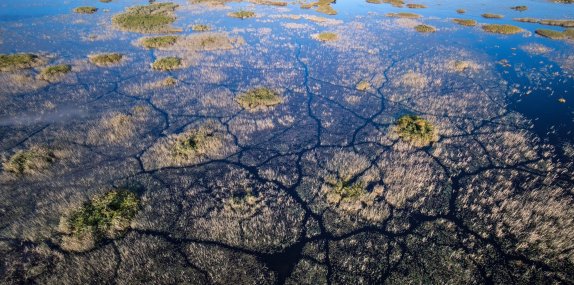
Nature is foundational to the prosperity and security of people and economies. Natural capital, which includes all of nature’s assets – geology, soil, air, water, and all living things – provides a wide range of services to people and is estimated to contribute to 36% of the total wealth of developing countries worldwide. Yet, many of the benefits we receive from nature, and the impacts we have on nature remain hidden and are often not taken into consideration when making decisions. As a result, nature is being eroded at an alarming rate; the loss of forest alone costs the global economy between $2 and $5 trillion per year, or nearly one-third of the U.S. economy. Neither the value of natural capital, however, nor the impacts of its loss are captured in the System of National Accounts, which is used by nations to measure economic activity and by decision makers to assess performance, set policy, and report on progress.
To address this, Natural Capital Accounting (NCA) aims to measure the stocks of natural resources (both renewable and non-renewable) and the flows of benefits they provide. More specifically, NCA seeks to capture and integrate the contribution of nature into the systems that the private and public sectors use to make decisions. NCA efforts in the public sector, typically referred to as environmental-economic accounting, are the domain of the United Nation’s System of Environmental-Economic Accounts (SEEA). The SEEA is an internationally accepted framework to make explicit the interactions between the economy and the environment. The SEEA is an important step towards the incorporation of nature into the System of National Accounts and includes the Central Framework (CF) - which deals with, for example, water, energy, and mineral accounts - as well as guidelines for the next generation of standards under development known as Ecosystem Accounting (EA).
Over the past few years, the number NCA initiatives across Africa have dramatically increased. A recent survey of 49 countries in sub-Saharan Africa conducted by the GDSA found evidence of ongoing national-level work on NCA in at least 21 countries. These efforts are facilitated by a range of entities, including the United Nations Statistical Division, United Nations Environment, the World Bank-led WAVES partnership, the Deutsche Gesellschaft für Internationale Zusammenarbeit (GIZ), Conservation International, and others.
With assistance from the World Bank-led WAVES partnership, the Government of Botswana has constructed water accounts from 1993-2012. The objective of these accounts is to facilitate better management of scarce resources for improved economic growth, diversification, and poverty reduction. The results of the accounts, which help inform water scarcity and equity issues, are being incorporated into the National Development Plan 11, and were used to guide: the raw water abstraction strategy project, catchment management committees, the National Water Master Plan review, and the Botswana National Water Conservation and Water Demand Management Strategy.
 Aerial shot of the Vumbura Plains, Okavango Delta, Botswana. © Jon McCormack
Aerial shot of the Vumbura Plains, Okavango Delta, Botswana. © Jon McCormack
In addition to several CF accounts, Uganda has made headway in publishing the world’s first species accounts. This accounting effort, which has been facilitated by UNEP World Centre for Monitoring Conservation (UNEP-WCMC) and the IDEEA Group, provides a clear and credible evidence base to understand the extent of human and economic impact on species biodiversity in Uganda. Key policy findings of the accounting effort included identifying areas important for wildlife-watching tourism and harvesting of non-timber forest products. The report provides significant insights into the state and trends of ecosystems and biodiversity for Uganda that will be used to assess national progress towards the objectives of Uganda’s National Development Plan (NDP II), its National Biodiversity Strategy Action Plan (NBSAP II), and various international commitments (e.g. Aichi targets and SDGs). At a program and sector level, the report identifies cost-effective actions that can help to re-establish and sustain valuable natural capital assets in ways that support positive social development outcomes.
In the future, the need to measure, value, and account for nature will only become greater – this is particularly true for Africa. For example, while the continent has contributed little to the causes of climate change, it will be increasingly hard hit as the climate begins to impact on the availability and quality of freshwater, the spread of disease, the integrity of coastal ecosystems and settlements, and agricultural productivity. As a result, it is expected that there will be a dramatic reduction in the productivity of crops, livestock, and fisheries; this could cost Africa as much as US$50 billion a year.
Dr. Kim Reuter, Technical Director of the Gaborone Declaration for Sustainability in Africa (GDSA). The functions of the GDSA Secretariat have been delegated to Conservation International until December 2018 by the Government of Botswana. More information can be found online: www.gaboronedeclaration.com
Share this page: